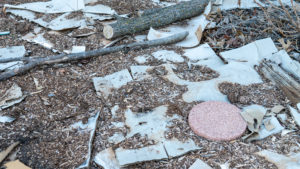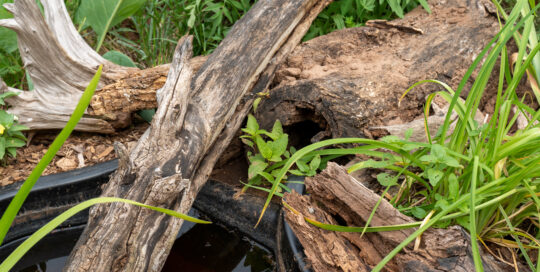Effective ways to kill grass
Views: 913

One of the most difficult aspects of expanding flowerbeds or starting new gardens is getting rid of existing grass. Since I am still expanding my gardens, I have to deal with this often. In my area, Bermudagrass is the bane of all gardeners. It takes extreme measures to kill it effectively. So, any method that works for Bermudagrass will likely work for any other grass, too. Fortunately, the cardboard box method described below works well for me.
The most effective non-organic way
The easiest way to kill grass is to use an herbicide such as glyphosate. This is not preferable to many gardeners wishing to avoid the use of chemicals. Additionally, there are concerns that glyphosate is a potential carcinogen. While the current science on this possibility is controversial, it’s something to consider before using.
The organic ways
Fortunately, there are organic options for killing grass. Some of these are more effective than others. A local food pantry, assisted by the regional extension agent, Keith Reed, has been experimenting with Bermuda removal while establishing organic garden plots. The following is a slightly abbreviated version of Keith’s report on the methods they used.
The Bermuda eradication project at Our Daily Bread in Stillwater, Oklahoma
Cardboard boxes come into Our Daily Bread by the hundreds so it only made sense to take advantage of this resource. We began by breaking down the boxes (removing staples but leaving most of the plasticized tape). Then, we spread them out at least 2-3 layers thick on the Bermuda and then covering them with several inches of wood chips. Avoid using cardboard with holes in it. Ff you do, make sure it’s covered with another layer of cardboard so that the air gaps from one layer to another are at least a foot apart.
Where the Bermuda did break through, we raked away all the wood chips (and rotting cardboard), hoed away ALL the living Bermuda rhizomes (it’s easy to see the difference between live plants and dead ones at this point) and repeated the process. In our toughest areas, we have repeated this as many as three times over two growing seasons to finally defeat the Bermuda. Note: we’ve found it’s easier to rake up and discard the plastic tape at this step in the process than it is to remove it from new boxes.
As the garden has expanded, we have also experimented using solarization as a first step. We chose to use clear plastic as it’s easier to see what is happening underneath. This method was only moderately successful as everywhere the plastic bubbled up, the Bermuda managed to survive, even through the heat of summer.
From a soil improvement perspective, cardboard/woodchips was the preferable option of the two as the structure of the soil under the cardboard begins to improve quickly once it’s covered. The microclimate seems to be ideal for the movement of earthworms and other decomposers.
Alternative Bermuda eradication technique
Another technique we’ve used is to dig up the green Bermuda sod (down to a depth of about 8” or so). Then we screened it using a 1/2” hail screen nailed to an old pallet. While this method is effective, it is incredibly labor intensive. It is also dependent on the soil moisture conditions being just right. Be advised, this is not for the faint-of-heart but it can be a quicker method if time is a factor.
No matter the method used, the grass needs weekly (or at least bi-weekly) hoeing sessions to remove the remaining trouble spots. The key to success here is spotting the break-out Bermuda early. This means it can be removed before the leaves can feed/restore energy reserves to the mother plant under the soil.
Bottom line: Is it possible to successfully control Bermuda without using herbicides? Yes, it is. Is it quick and or easy? No, it is not. Successfully killing this grass will only come with a long term commitment to fighting this challenging garden pest.
Meet Leslie Miller
Leslie Ann Miller shares 3.5 acres in rural Oklahoma with birds, butterflies and wide variety of animals. She is currently transforming her yard with plantings…
Leslie's Recent Posts

Creating microclimates and microhabitats to benefit wildlife






